A Brief History Of Medicine Part 2 Ancient

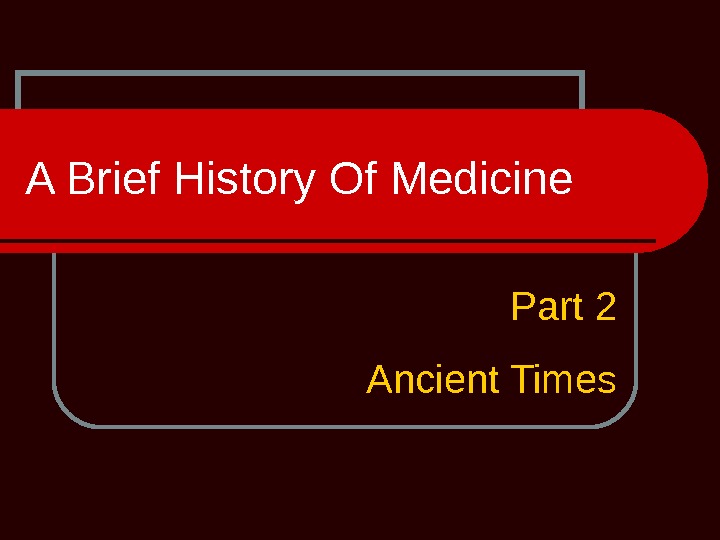

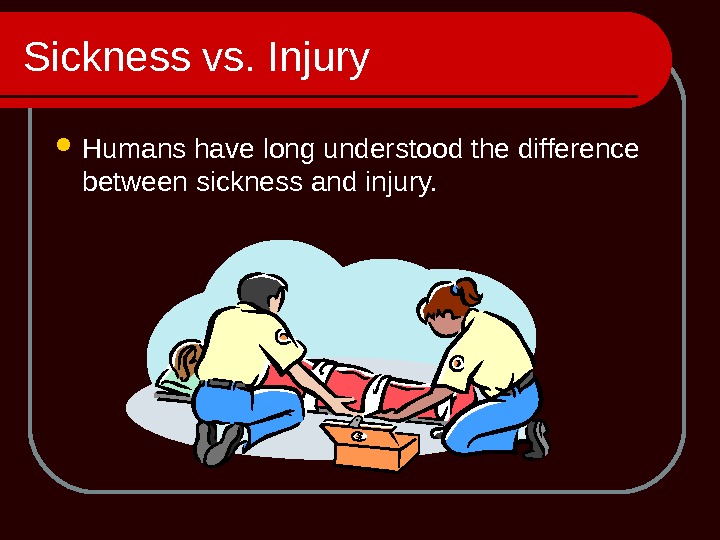
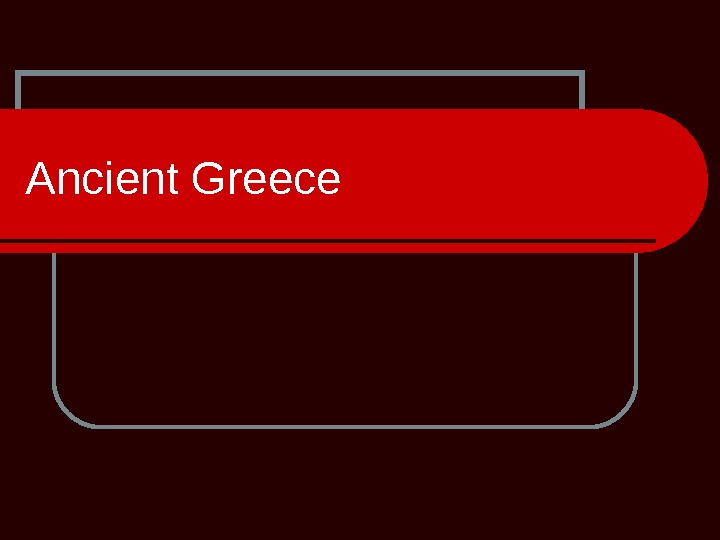
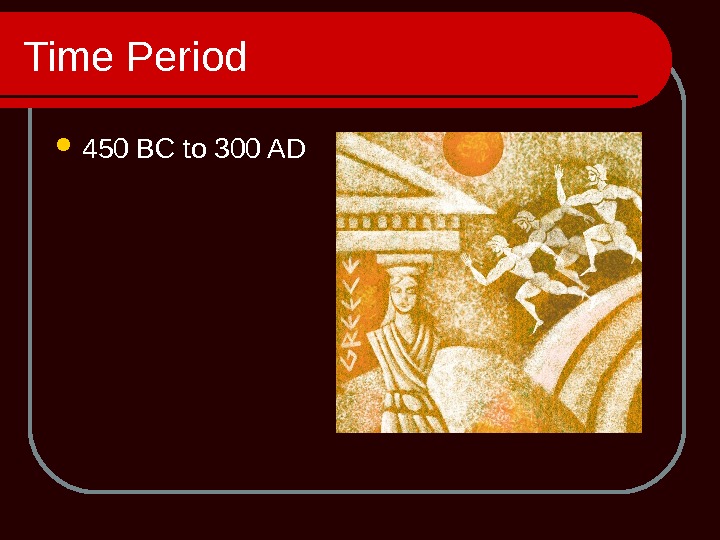
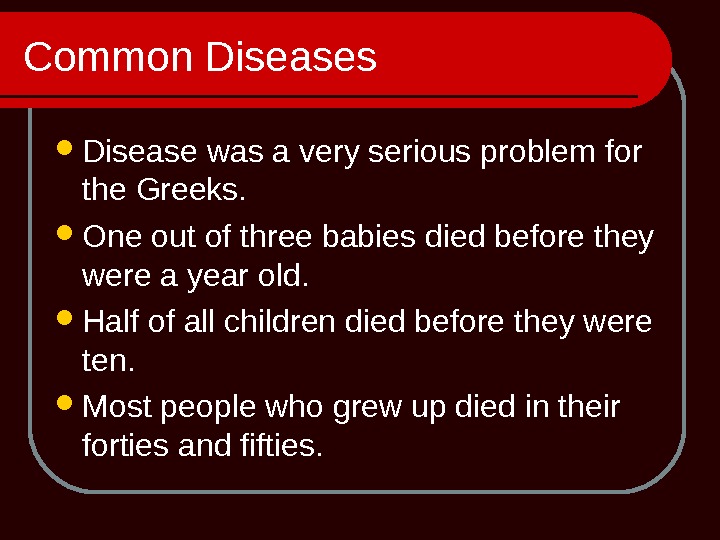
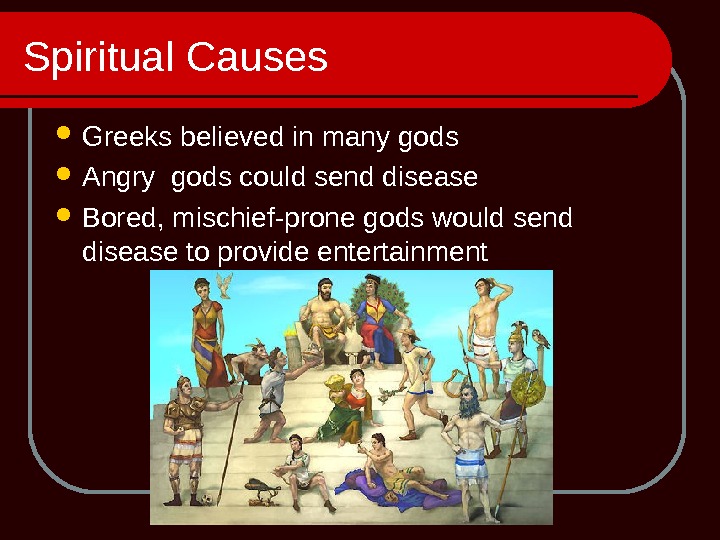

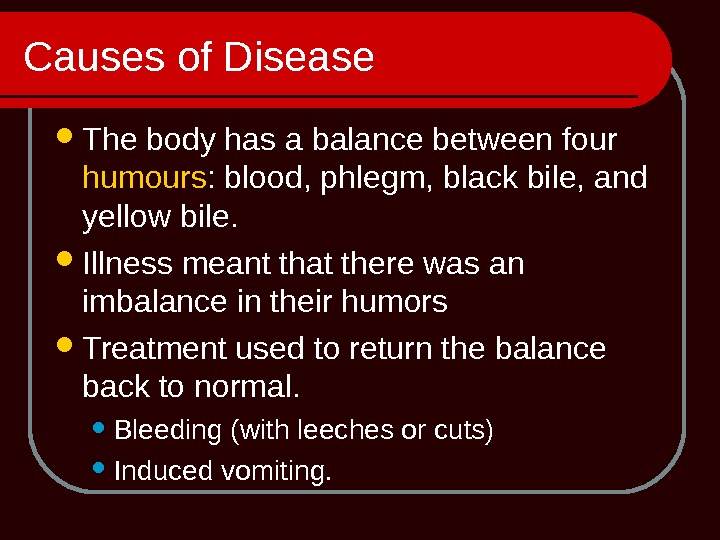

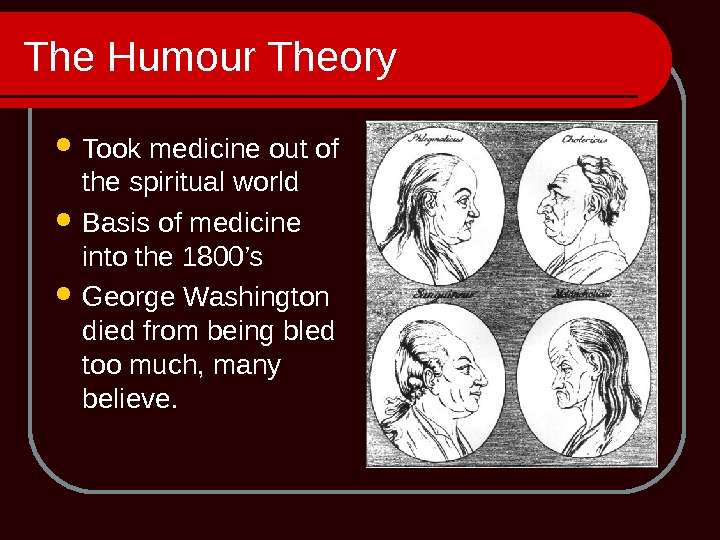



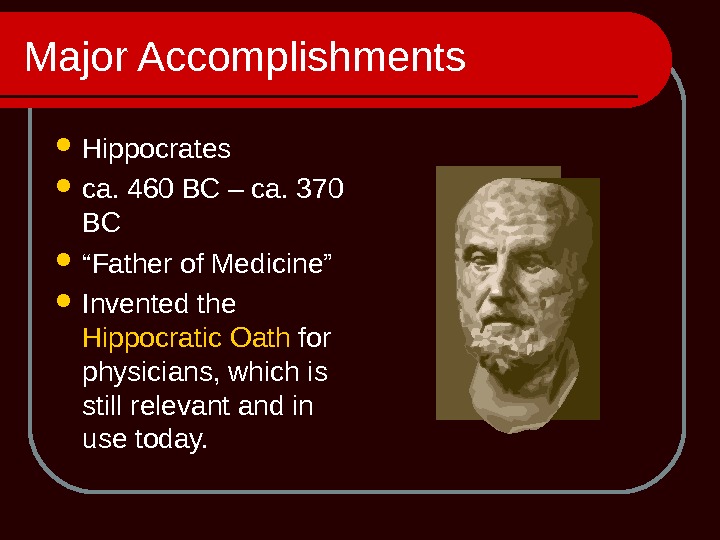
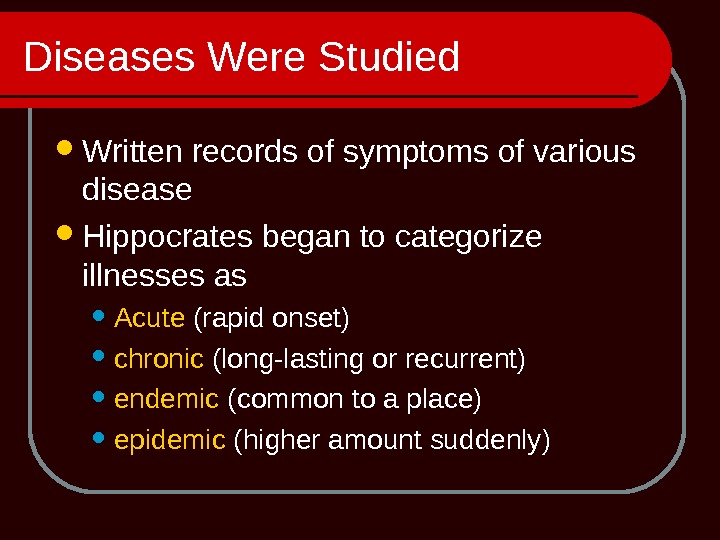

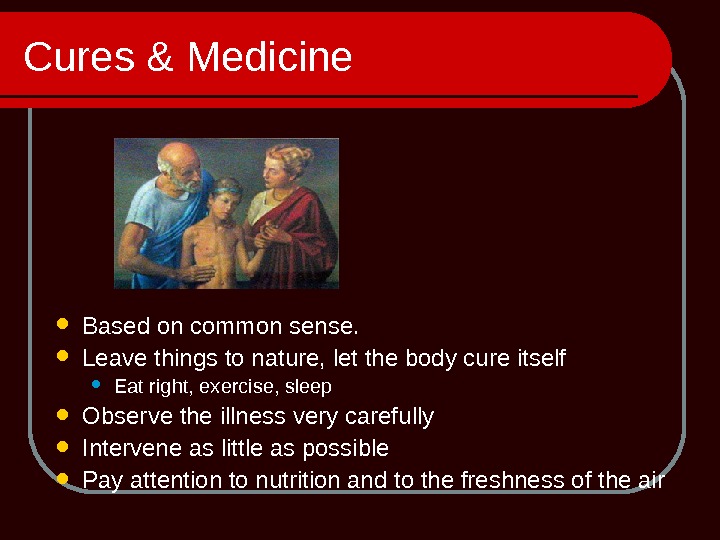
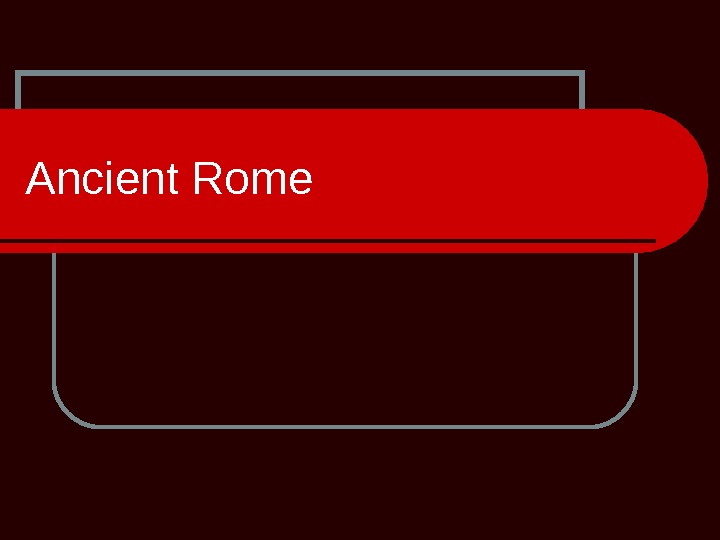
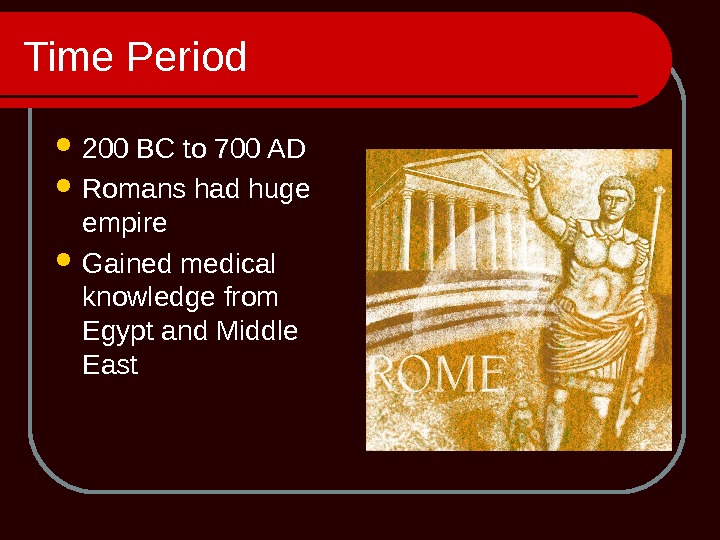
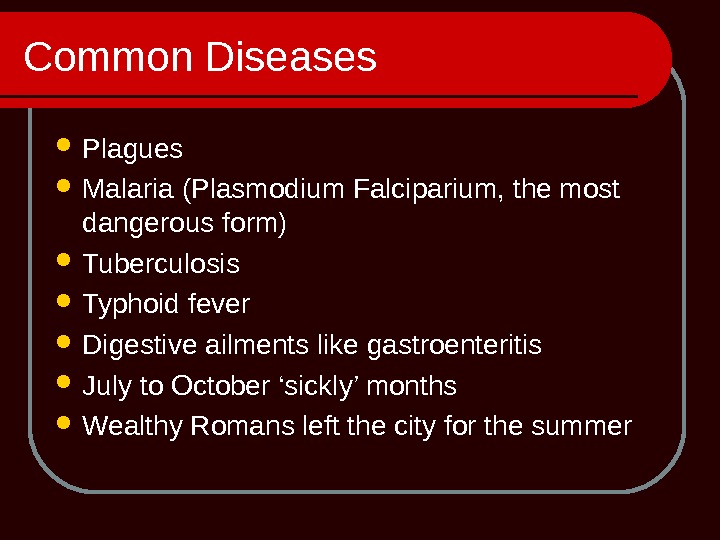
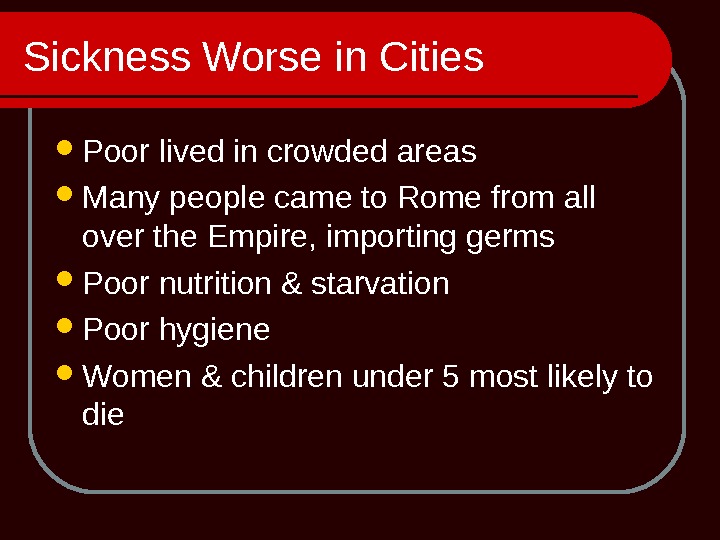
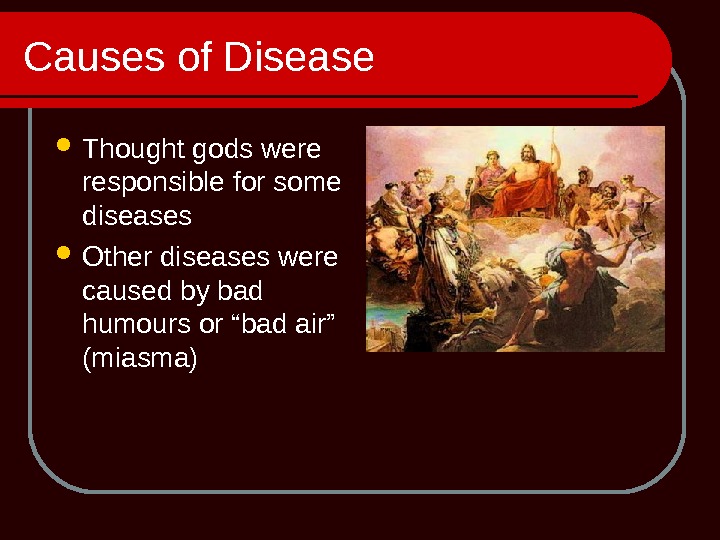
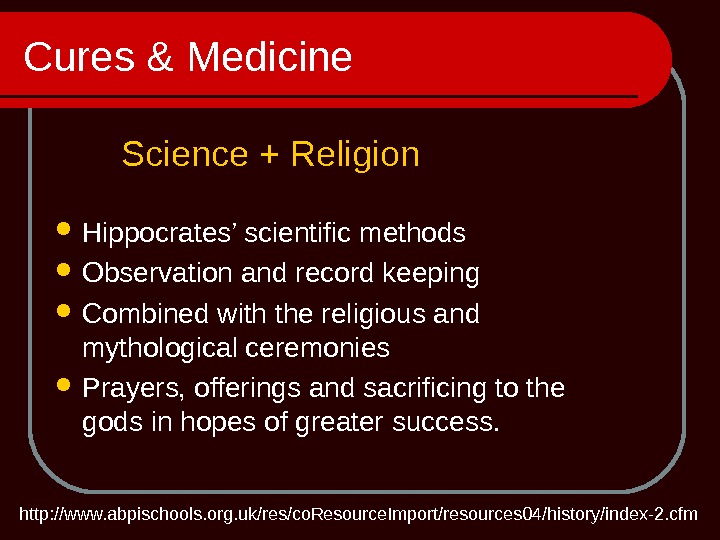

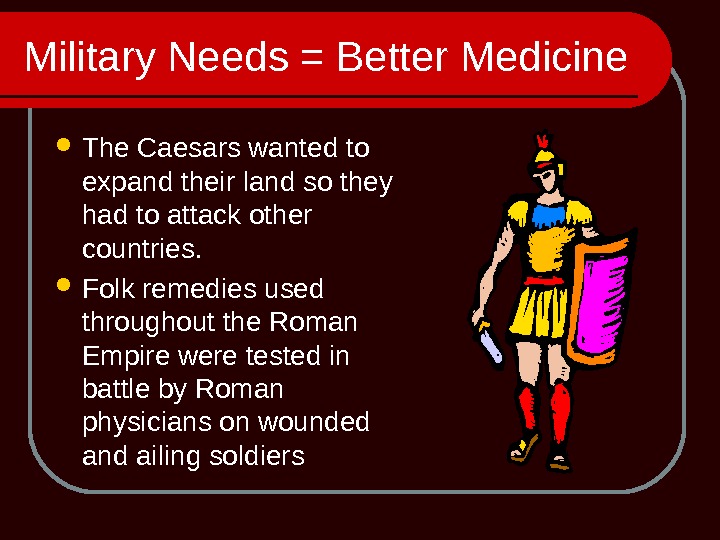
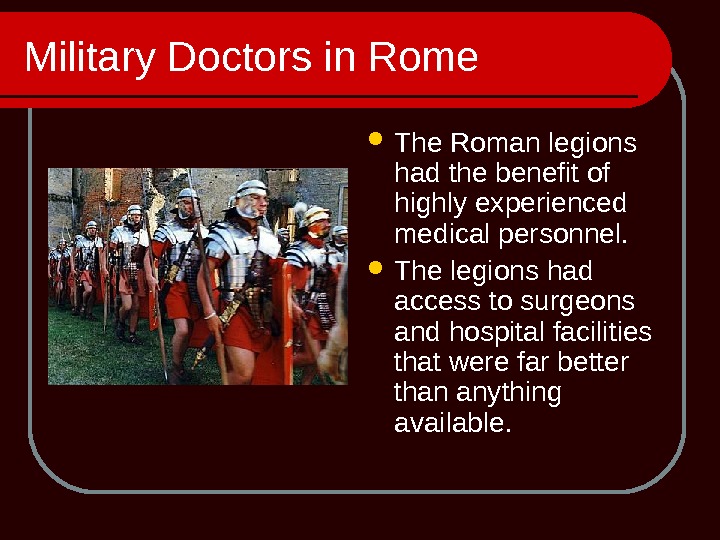
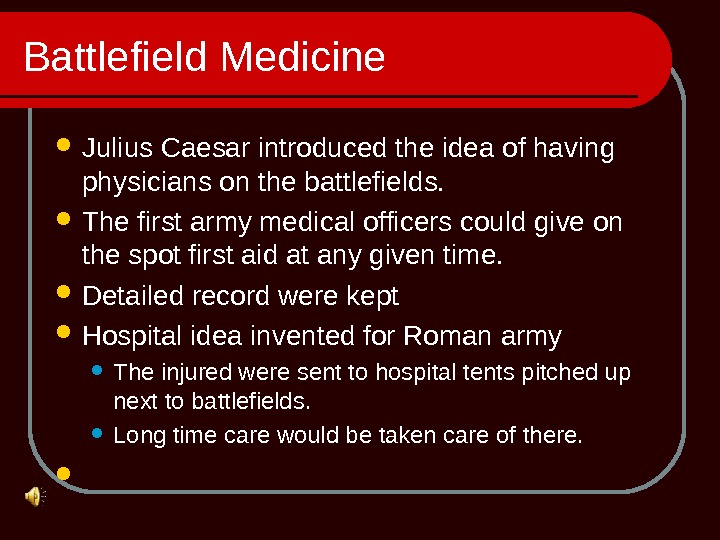

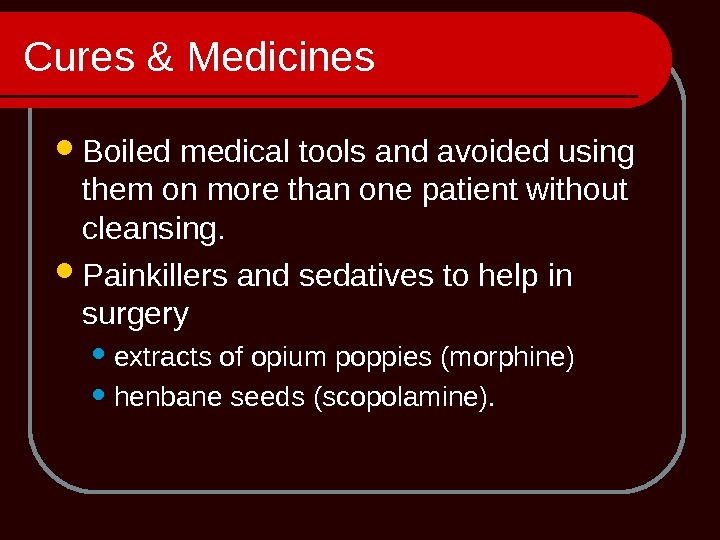
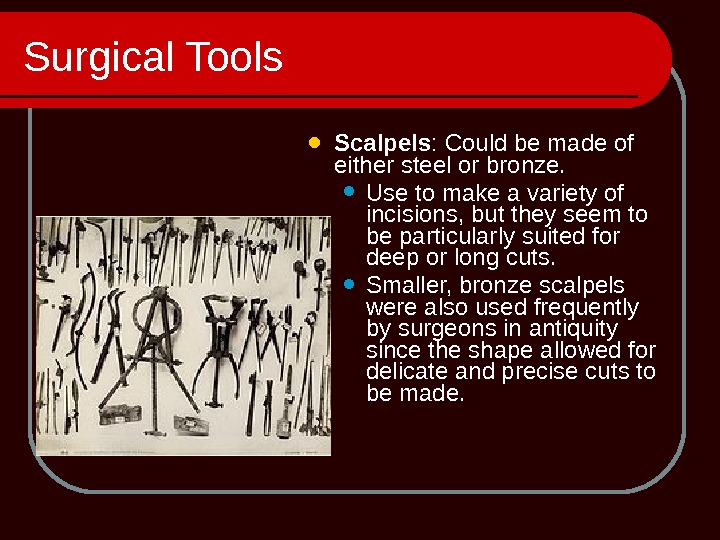

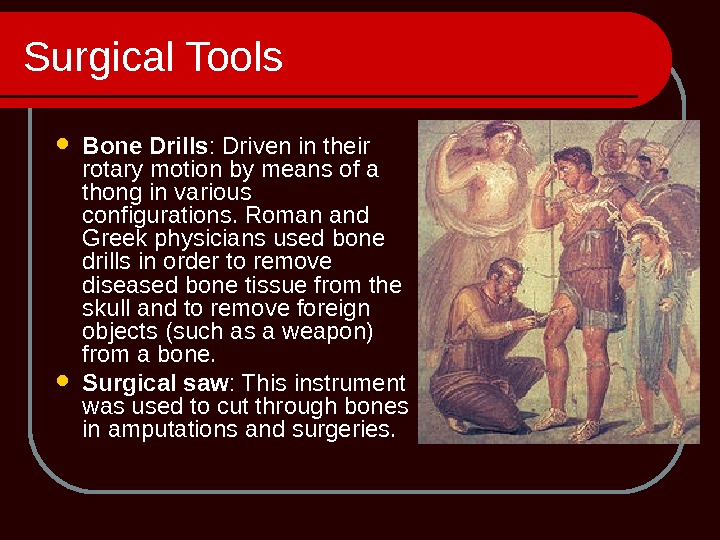


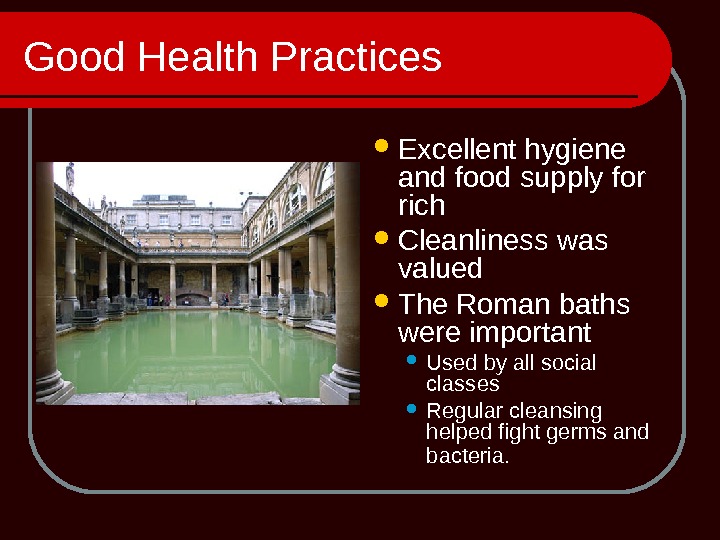
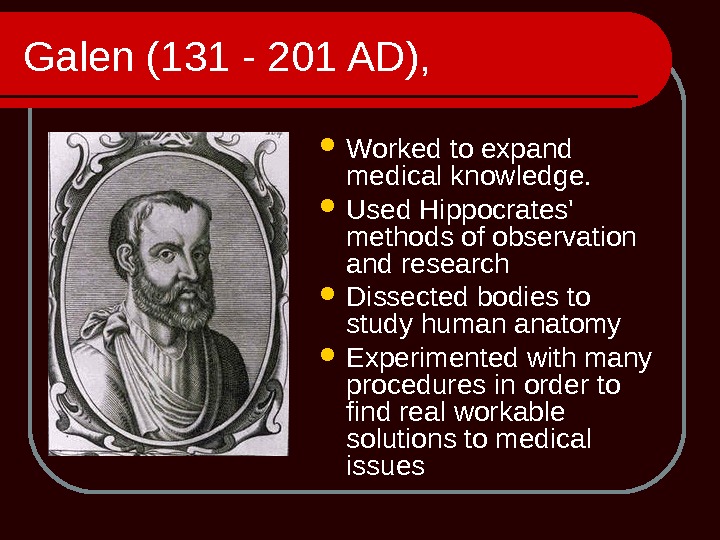
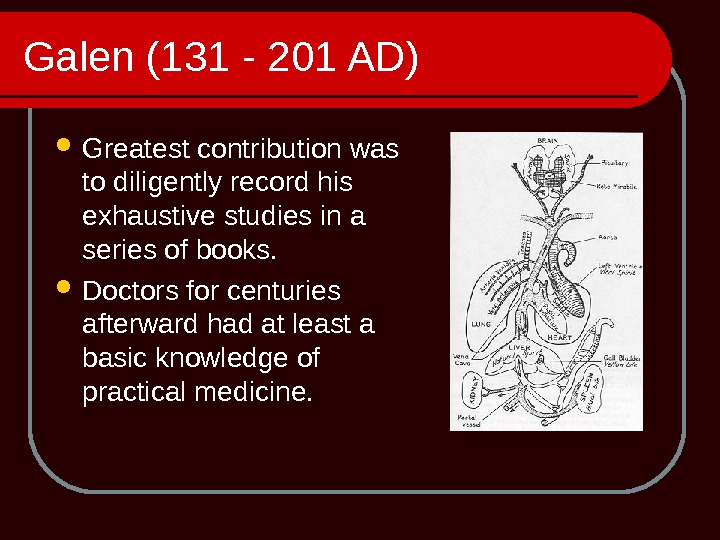
a_brief_history_of_medicine_part_2.ppt
- Размер: 1.9 Mегабайта
- Количество слайдов: 38
Описание презентации A Brief History Of Medicine Part 2 Ancient по слайдам
 A Brief History Of Medicine Part 2 Ancient Times
A Brief History Of Medicine Part 2 Ancient Times
 People have had illness. People have tried to explain the cause of disease. Humans have sought cures for sicknesses. Throughout History
People have had illness. People have tried to explain the cause of disease. Humans have sought cures for sicknesses. Throughout History
 Sickness vs. Injury Humans have long understood the difference between sickness and injury.
Sickness vs. Injury Humans have long understood the difference between sickness and injury.
 Ancient Greece
Ancient Greece
 Time Period 450 BC to
Time Period 450 BC to
 Common Diseases Disease was a very serious problem for the Greeks. One out of three babies died before they were a year old. Half of all children died before they were ten. Most people who grew up died in their forties and fifties.
Common Diseases Disease was a very serious problem for the Greeks. One out of three babies died before they were a year old. Half of all children died before they were ten. Most people who grew up died in their forties and fifties.
 Spiritual Causes Greeks believed in many gods Angry gods could send disease Bored, mischief-prone gods would send disease to provide entertainment
Spiritual Causes Greeks believed in many gods Angry gods could send disease Bored, mischief-prone gods would send disease to provide entertainment
 Greek Gods Apollo was said to be the god of healing , and could cure entire plagues. Chiron , a Greek Centaur, was also said to have mythological healing powers The first medical god is Asclepius many people went to his temple so they would not get sick.
Greek Gods Apollo was said to be the god of healing , and could cure entire plagues. Chiron , a Greek Centaur, was also said to have mythological healing powers The first medical god is Asclepius many people went to his temple so they would not get sick.
 Causes of Disease The body has a balance between four humours : blood, phlegm, black bile, and yellow bile. Illness meant that there was an imbalance in their humors Treatment used to return the balance back to normal. Bleeding (with leeches or cuts) Induced vomiting.
Causes of Disease The body has a balance between four humours : blood, phlegm, black bile, and yellow bile. Illness meant that there was an imbalance in their humors Treatment used to return the balance back to normal. Bleeding (with leeches or cuts) Induced vomiting.
 The Four Humours Blood gave a person a lively personality and lots of energy. They would enjoy life and the arts. Phlegm made a person feel lethargic or have a dull personality Black bile caused depression and sadness. Yellow bile influenced a person’s temperament. It caused anger and a fiery temper.
The Four Humours Blood gave a person a lively personality and lots of energy. They would enjoy life and the arts. Phlegm made a person feel lethargic or have a dull personality Black bile caused depression and sadness. Yellow bile influenced a person’s temperament. It caused anger and a fiery temper.
 The Humour Theory Took medicine out of the spiritual world Basis of medicine into the 1800’s George Washington died from being bled too much, many believe.
The Humour Theory Took medicine out of the spiritual world Basis of medicine into the 1800’s George Washington died from being bled too much, many believe.
 Observed Contagious Diseases Noticed that some disease could spread in the population Idea of quarantine developed, 40 days needed to avoid contagion from diseases the number 40 was sacred
Observed Contagious Diseases Noticed that some disease could spread in the population Idea of quarantine developed, 40 days needed to avoid contagion from diseases the number 40 was sacred
 Major Accomplishments The first known Greek medical school opened in Cnidus in 700 BC Practice of observing patients was developed
Major Accomplishments The first known Greek medical school opened in Cnidus in 700 BC Practice of observing patients was developed
 Cures & Medicine Doctors used many cures for disease Medical schools taught treatments Detailed records were kept http: //www. abpischools. org. uk/res/co. Resource. Import/resources 04/history/index-2. cfm
Cures & Medicine Doctors used many cures for disease Medical schools taught treatments Detailed records were kept http: //www. abpischools. org. uk/res/co. Resource. Import/resources 04/history/index-2. cfm
 Major Accomplishments Hippocrates ca. 460 BC – ca. 370 BC “ Father of Medicine” Invented the Hippocratic Oath for physicians, which is still relevant and in use today.
Major Accomplishments Hippocrates ca. 460 BC – ca. 370 BC “ Father of Medicine” Invented the Hippocratic Oath for physicians, which is still relevant and in use today.
 Diseases Were Studied Written records of symptoms of various disease Hippocrates began to categorize illnesses as Acute (rapid onset) chronic (long-lasting or recurrent) endemic (common to a place) epidemic (higher amount suddenly)
Diseases Were Studied Written records of symptoms of various disease Hippocrates began to categorize illnesses as Acute (rapid onset) chronic (long-lasting or recurrent) endemic (common to a place) epidemic (higher amount suddenly)
 Observed Contagious Diseases Noticed that some disease could spread in the population Idea of quarantine developed, 40 days needed to avoid contagion from diseases the number 40 was sacred
Observed Contagious Diseases Noticed that some disease could spread in the population Idea of quarantine developed, 40 days needed to avoid contagion from diseases the number 40 was sacred
 Cures & Medicine Based on common sense. Leave things to nature, let the body cure itself Eat right, exercise, sleep Observe the illness very carefully Intervene as little as possible Pay attention to nutrition and to the freshness of the air
Cures & Medicine Based on common sense. Leave things to nature, let the body cure itself Eat right, exercise, sleep Observe the illness very carefully Intervene as little as possible Pay attention to nutrition and to the freshness of the air
 Ancient Rome
Ancient Rome
 Time Period 200 BC to 700 AD Romans had huge empire Gained medical knowledge from Egypt and Middle East
Time Period 200 BC to 700 AD Romans had huge empire Gained medical knowledge from Egypt and Middle East
 Common Diseases Plagues Malaria (Plasmodium Falciparium, the most dangerous form) Tuberculosis Typhoid fever Digestive ailments like gastroenteritis July to October ‘sickly’ months Wealthy Romans left the city for the summer
Common Diseases Plagues Malaria (Plasmodium Falciparium, the most dangerous form) Tuberculosis Typhoid fever Digestive ailments like gastroenteritis July to October ‘sickly’ months Wealthy Romans left the city for the summer
 Sickness Worse in Cities Poor lived in crowded areas Many people came to Rome from all over the Empire, importing germs Poor nutrition & starvation Poor hygiene Women & children under 5 most likely to die
Sickness Worse in Cities Poor lived in crowded areas Many people came to Rome from all over the Empire, importing germs Poor nutrition & starvation Poor hygiene Women & children under 5 most likely to die
 Causes of Disease Thought gods were responsible for some diseases Other diseases were caused by bad humours or “bad air” (miasma)
Causes of Disease Thought gods were responsible for some diseases Other diseases were caused by bad humours or “bad air” (miasma)
 Cures & Medicine Hippocrates’ scientific methods Observation and record keeping Combined with the religious and mythological ceremonies Prayers, offerings and sacrificing to the gods in hopes of greater success. Science + Religion http: //www. abpischools. org. uk/res/co. Resource. Import/resources 04/history/index-2. cfm
Cures & Medicine Hippocrates’ scientific methods Observation and record keeping Combined with the religious and mythological ceremonies Prayers, offerings and sacrificing to the gods in hopes of greater success. Science + Religion http: //www. abpischools. org. uk/res/co. Resource. Import/resources 04/history/index-2. cfm
 Cures & Medicine Many of the Roman gods were believed to have healing powers Aesculapius, the god of healing, was the prominent deity that governed the Roman medical practice and His symbolic snake entwined staff continues to be used as a symbol of the medical field today.
Cures & Medicine Many of the Roman gods were believed to have healing powers Aesculapius, the god of healing, was the prominent deity that governed the Roman medical practice and His symbolic snake entwined staff continues to be used as a symbol of the medical field today.
 Military Needs = Better Medicine The Caesars wanted to expand their land so they had to attack other countries. Folk remedies used throughout the Roman Empire were tested in battle by Roman physicians on wounded and ailing soldiers
Military Needs = Better Medicine The Caesars wanted to expand their land so they had to attack other countries. Folk remedies used throughout the Roman Empire were tested in battle by Roman physicians on wounded and ailing soldiers
 Military Doctors in Rome The Roman legions had the benefit of highly experienced medical personnel. The legions had access to surgeons and hospital facilities that were far better than anything available.
Military Doctors in Rome The Roman legions had the benefit of highly experienced medical personnel. The legions had access to surgeons and hospital facilities that were far better than anything available.
 Battlefield Medicine Julius Caesar introduced the idea of having physicians on the battlefields. The first army medical officers could give on the spot first aid at any given time. Detailed record were kept Hospital idea invented for Roman army The injured were sent to hospital tents pitched up next to battlefields. Long time care would be taken care of there.
Battlefield Medicine Julius Caesar introduced the idea of having physicians on the battlefields. The first army medical officers could give on the spot first aid at any given time. Detailed record were kept Hospital idea invented for Roman army The injured were sent to hospital tents pitched up next to battlefields. Long time care would be taken care of there.
 Doctors in Rome Civilian doctors were mostly Greeks, slaves or freedmen A few more prominent individuals who served the upper classes. Doctors themselves were basically craftsmen, like any other profession. Used apprenticeships to pass on the art Later, medical schools were established
Doctors in Rome Civilian doctors were mostly Greeks, slaves or freedmen A few more prominent individuals who served the upper classes. Doctors themselves were basically craftsmen, like any other profession. Used apprenticeships to pass on the art Later, medical schools were established
 Cures & Medicines Boiled medical tools and avoided using them on more than one patient without cleansing. Painkillers and sedatives to help in surgery extracts of opium poppies (morphine) henbane seeds (scopolamine).
Cures & Medicines Boiled medical tools and avoided using them on more than one patient without cleansing. Painkillers and sedatives to help in surgery extracts of opium poppies (morphine) henbane seeds (scopolamine).
 Surgical Tools Scalpels : Could be made of either steel or bronze. Use to make a variety of incisions, but they seem to be particularly suited for deep or long cuts. Smaller, bronze scalpels were also used frequently by surgeons in antiquity since the shape allowed for delicate and precise cuts to be made.
Surgical Tools Scalpels : Could be made of either steel or bronze. Use to make a variety of incisions, but they seem to be particularly suited for deep or long cuts. Smaller, bronze scalpels were also used frequently by surgeons in antiquity since the shape allowed for delicate and precise cuts to be made.
 Surgical Tools Hooks : A common instrument used regularly by Roman and Greek doctors. The ancient doctors used two basic types of hooks Blunt hooks were used primarily as probes for dissection and for raising blood vessels. Sharp hooks were used to hold and lift small pieces of tissue so that they could be extracted, and to retract the edges of wounds.
Surgical Tools Hooks : A common instrument used regularly by Roman and Greek doctors. The ancient doctors used two basic types of hooks Blunt hooks were used primarily as probes for dissection and for raising blood vessels. Sharp hooks were used to hold and lift small pieces of tissue so that they could be extracted, and to retract the edges of wounds.
 Surgical Tools Bone Drills : Driven in their rotary motion by means of a thong in various configurations. Roman and Greek physicians used bone drills in order to remove diseased bone tissue from the skull and to remove foreign objects (such as a weapon) from a bone. Surgical saw : This instrument was used to cut through bones in amputations and surgeries.
Surgical Tools Bone Drills : Driven in their rotary motion by means of a thong in various configurations. Roman and Greek physicians used bone drills in order to remove diseased bone tissue from the skull and to remove foreign objects (such as a weapon) from a bone. Surgical saw : This instrument was used to cut through bones in amputations and surgeries.
 Surgical Tools Forceps : Forceps were often used in conjunction with bone drills. They were used by ancient doctors to extract small fragments of bone which could not be grasped by the fingers. Catheters : Used in order to open up a blocked urinary tract which allowed urine to pass freely from the body.
Surgical Tools Forceps : Forceps were often used in conjunction with bone drills. They were used by ancient doctors to extract small fragments of bone which could not be grasped by the fingers. Catheters : Used in order to open up a blocked urinary tract which allowed urine to pass freely from the body.
 Good Health Practices Aqueducts brought fresh running water Use of toilets and sewer systems Prevented the spread of many diseases carried in water Washed wastes away from cities No evidence they understood health value Lead poisoning common (used in pipes)
Good Health Practices Aqueducts brought fresh running water Use of toilets and sewer systems Prevented the spread of many diseases carried in water Washed wastes away from cities No evidence they understood health value Lead poisoning common (used in pipes)
 Good Health Practices Excellent hygiene and food supply for rich Cleanliness was valued The Roman baths were important Used by all social classes Regular cleansing helped fight germs and bacteria.
Good Health Practices Excellent hygiene and food supply for rich Cleanliness was valued The Roman baths were important Used by all social classes Regular cleansing helped fight germs and bacteria.
 Galen (131 — 201 AD), Worked to expand medical knowledge. Used Hippocrates’ methods of observation and research Dissected bodies to study human anatomy Experimented with many procedures in order to find real workable solutions to medical issues
Galen (131 — 201 AD), Worked to expand medical knowledge. Used Hippocrates’ methods of observation and research Dissected bodies to study human anatomy Experimented with many procedures in order to find real workable solutions to medical issues
 Galen (131 — 201 AD) Greatest contribution was to diligently record his exhaustive studies in a series of books. Doctors for centuries afterward had at least a basic knowledge of practical medicine.
Galen (131 — 201 AD) Greatest contribution was to diligently record his exhaustive studies in a series of books. Doctors for centuries afterward had at least a basic knowledge of practical medicine.

